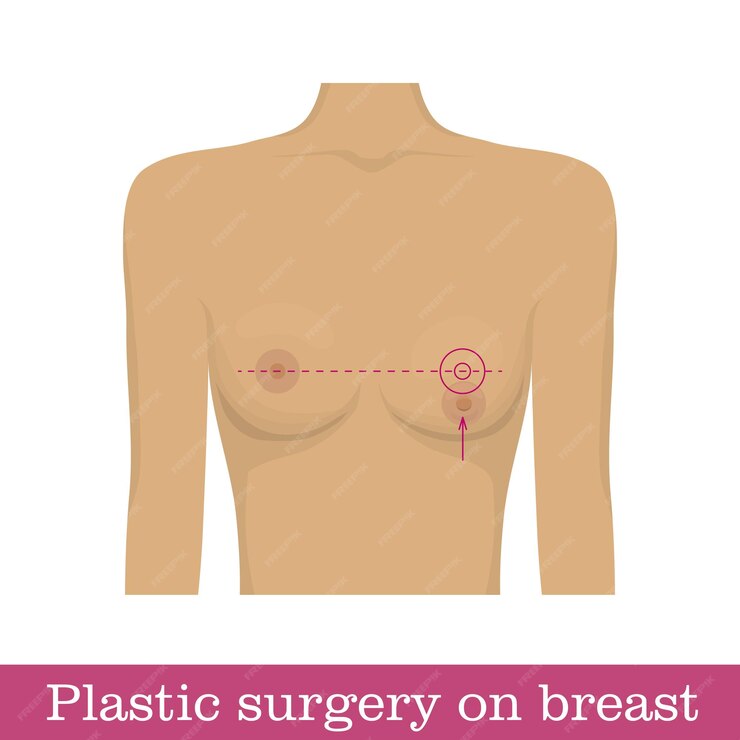Breast reduction surgery, also known as reduction mammoplasty, is a procedure that reduces the size of large breasts to alleviate discomfort and achieve a more proportionate appearance. Despite its benefits, many myths and misconceptions surround this surgery. In this guide, we will debunk common myths and present the facts about breast reduction surgery to help you make an informed decision.
What is Breast Reduction Surgery?
Breast reduction surgery involves removing excess breast tissue, fat, and skin to achieve a breast size more proportional to your body. This procedure can help reduce chronic pain in the back, neck, and shoulders, improve posture, and enhance overall body contour.
Myth vs. Fact
Myth 1: Breast Reduction Surgery is Only for Cosmetic Reasons
Fact: While breast reduction surgery can enhance the aesthetic appearance of the breasts, it is often performed for medical reasons. Many women experience chronic pain, skin irritation, and other physical discomforts due to large breasts. This surgery can alleviate these symptoms and improve quality of life.
Myth 2: Breast Reduction Surgery Leaves Unsightly Scars
Fact: All surgical procedures leave some scarring, but experienced surgeons use advanced techniques to minimize scarring. Over time, scars typically fade and become less noticeable. Additionally experienced plastic surgeons such as Dr Richard Hamilton, places scars in inconspicuous areas, such as around the areola and in the natural breast crease.
Myth 3: Recovery from Breast Reduction Surgery is Long and Painful
Fact: Recovery from breast reduction surgery varies from person to person, but most patients can return to normal activities within a few weeks. Pain and discomfort are usually manageable with prescribed medications. Following Dr Hamilton’s post-operative care instructions and attending your follow up [ appointments can help ensure a smooth and speedy recovery.
Myth 4: Breastfeeding is Impossible After Breast Reduction Surgery
Fact: Breastfeeding after breast reduction surgery is often possible with the techniques that Dr Richard Hamilton uses, but it may be affected by the type of surgery and the amount of tissue removed. Some women can successfully breastfeed after the procedure, while others may face challenges. Not every woman has the natural ability to breast feed so surgery will not change that. It’s essential to discuss your breastfeeding plans with Dr Hamilton. before the surgery.
Myth 5: Breast Reduction Surgery Increases the Risk of Breast Cancer
Fact: There is no evidence to suggest that breast reduction surgery increases the risk of breast cancer. In fact, reducing the amount of breast tissue may make it easier to detect abnormalities during routine breast exams and mammograms.
Dr Hamilton always submits the breast tissue removed during reduction mammaplasty to the pathology laboratory to exclude the presence of cancer cells.
The Benefits of Breast Reduction Surgery’s
Relief from Physical Discomfort
Large breasts can cause chronic pain in the back, neck, and shoulders, as well as skin irritation and rashes. Breast reduction surgery’s can alleviate these symptoms, improving overall quality of life.
Enhanced Aesthetic Appearance
Breast reduction surgery’s can help achieve a more proportionate and youthful breast shape, enhancing overall body contour and boosting self-confidence.
Improved Ability to Engage in Physical Activities
Large breasts can hinder physical activities and make exercise uncomfortable. Reducing breast size can increase your ability to participate in physical activities and lead a more active and enjoyable lifestyle.
Better Posture
Reducing the weight of the breasts can improve posture, reducing strain on the spine and shoulders, and eliminate the indentations of bra straps cause by heavy breasts.
The Procedure Itself
Breast reduction surgery’s is typically performed as a day surgery procedure under general anesthesia and usually takes about two to four hours to complete. Your plastic surgeon Dr Richard Hamilton makes incisions, removes excess tissue, fat, and skin, and reshapes the remaining breast tissue. The incisions are then closed with sutures, and surgical tape or adhesive may be applied to support the healing process.
Recovery and Aftercare
After the surgery, patients will receive detailed oral and written aftercare instructions, including wearing a supportive surgical bra, taking prescribed medications to manage pain and prevent infection, and avoiding strenuous activities for several weeks. Most patients can return to work and light activities within two weeks, but full recovery may take less than six weeks.
Breast reduction surgery’s offers significant physical and psychological benefits for those experiencing discomfort or dissatisfaction with their large breasts. By debunking common myths and understanding the facts, you can make an informed decision about whether this procedure is right for you. Consulting with a qualified experienced skilful surgeon such as Dr Richard Hamilton who has experience performing breast reduction surgery’s regularly over more than 20 years , is essential to understand the procedure, potential benefits, and risks, ensuring a successful outcome. Dr Hamilton and his staff will support your through your surgical journey and you can rely upon him to look after you.







